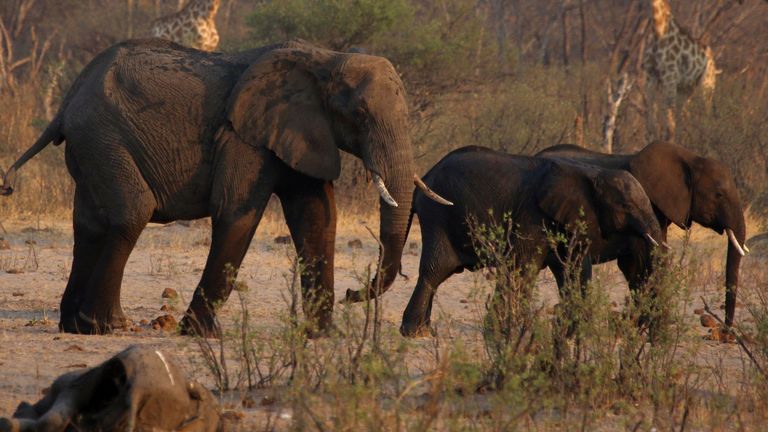Namibia plans to kill more than 700 animals including elephants and hippos — and distribute the meat
3 min read

Namibia has unveiled a plan to cull over 700 wild animals, including elephants, zebras, and hippos, in a bid to address the severe food insecurity exacerbated by the nation’s worst drought in a century. This measure aims to provide meat for those struggling with hunger while alleviating the environmental strain caused by the drought.
The culling, announced by Namibia’s Ministry of Environment, Forestry and Tourism, will involve the targeted killing of 83 elephants, 30 hippos, 60 buffalo, 50 impala, 100 blue wildebeest, and 300 zebras. The animals will be culled from both national parks and communal areas where their populations are deemed unsustainable given the current drought conditions. This initiative is set to be carried out by professional hunters to ensure a controlled and regulated process.
The primary goal of the culling program is to ease the pressure on Namibia’s water resources and grazing lands, which are critically strained by the increased wildlife populations. The ministry explained that reducing animal numbers will help balance the availability of resources and minimize conflicts between wildlife and human populations. During drought periods, such conflicts can become more frequent as animals are driven to encroach on human settlements in search of food and water.
Namibia has been in a state of emergency since May due to the severe impacts of the drought. Approximately 1.4 million people—about half of the nation’s population—are expected to face acute food insecurity in the coming months. The culling program is part of a broader strategy to address this crisis by reallocating the meat to drought relief efforts.
So far, more than 150 animals have been culled, yielding over 125,000 pounds of meat. This meat is being distributed to those in need, particularly in rural areas that are hardest hit by the food crisis. The ministry expressed satisfaction with the program’s progress, highlighting its critical role in supporting Namibians during this challenging period.
The decision to cull such a significant number of animals is controversial. It reflects the harsh reality of a country grappling with severe drought conditions and the impacts of climate change. Southern Africa, including Namibia, has been heavily affected by El Niño, a climate phenomenon that has resulted in dramatically reduced rainfall and intensified temperatures across the region. This climatic shift, compounded by the broader effects of climate change, has led to devastating consequences for both people and wildlife.
Elephants, in particular, are symbolic of the region’s wildlife and are critical to its ecosystem. Southern Africa is home to more than 200,000 elephants, but the drought has severely impacted their survival, with hundreds reportedly perishing last year as water sources dried up.
While the culling plan is designed to provide immediate relief and address urgent needs, it also raises ethical and ecological questions. The long-term effects on wildlife populations and ecosystems are a concern, as is the potential impact on conservation efforts. Nevertheless, Namibia’s government argues that the program is a necessary measure to manage the immediate crisis and to distribute valuable resources to those in dire need.
Overall, Namibia’s approach reflects a complex balancing act between environmental management and humanitarian needs. As the country navigates this unprecedented drought, the outcomes of this culling program will be closely watched both locally and internationally.